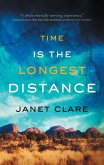The Longest Journey is a bildungsroman by E. M. Forster, first published in 1907. It is the second of Forster's six published novels, following Where Angels Fear to Tread (1905) and preceding A Room with a View (1908) and Howards End (1910). It has a reputation for being the least known of Forster's novels, but was also the author's personal favourite and one of his most autobiographical. It is the only one of Forster's novels not to have received a film or television adaptation. Critically The Longest Journey is the most polarizing of Forster's novels.
Bitte wählen Sie Ihr Anliegen aus.
Rechnungen
Retourenschein anfordern
Bestellstatus
Storno








